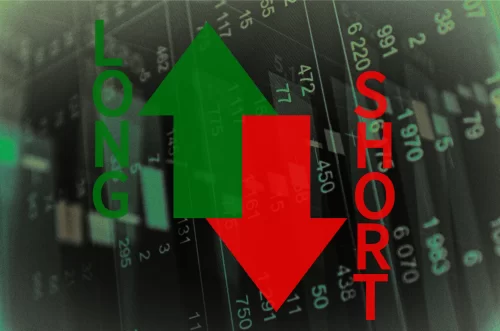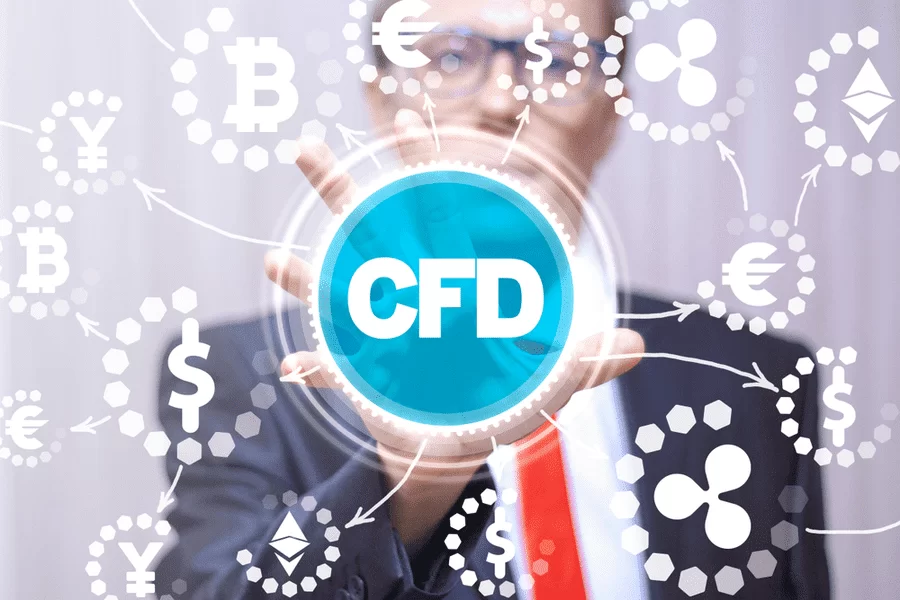
What are CFDs and how do you invest in them?
In the investment world, you have probably come across the word CFD . But what exactly is a CFD? And what are the advantages and disadvantages of investing in CFDs? Compareallbroker.com is happy to tell you more about this. CFD stands for Contract For Difference : a contract between two parties in which the seller pays the difference between the purchase price and the sales price of the underlying product. Is the difference between the purchase and sales price negative? Then the buyer pays this difference to the seller. With this financial product, you can profit from the price increases and price decreases of the underlying product in 2 ways.
How exactly does this work?
Before you invest your capital in financial products, it is always important to know exactly how such a product works. A CFD is a contract between seller and buyer with leverage . The underlying value of the CFD can be anything, such as shares, indices or foreign currencies. As a buyer, you do not become the owner of the underlying product. As an investor, you respond to price movements without actually buying the product. By means of CFDs, you take a position, as it were. Are you responding to a price increase? Then you take a long position . Are you responding to a price decrease? Then this is a short position .
At the moment the CFD agreement is concluded, the difference in value between the purchase and sale price is settled. Please note! This is not yet the moment of settlement. The profit or loss is only settled at the moment the position is closed. Are you concluding a CFD agreement? Then no direct payment takes place. Is the CFD position closed? Then the settlement takes place. In short : the selling party in the CFD pays the difference between the value of the underlying product at the time of purchase and sale. If the difference is negative, then the seller will receive money from the buyer.
What are the benefits of a CFD?
By means of leverage, small price fluctuations can cause large profits or losses. This means that you as an investor can make a large investment with a relatively small investment amount. An example: a CFD on the AEX index represents a value of €500 while the margin requirement is €30. This means that you can invest at a higher value with a small investment. Buying a CFD is the same as buying a share.

Do you want to respond to a price increase? Then you take a long position by means of a CFD. Do you then sell the CFD? Then you respond to a price decrease and you take a short position. In this way you respond to the price movements of the underlying value. Moreover, the bid and ask prices are generally exactly the same as those of the underlying product. Is dividend paid? Then these payments are settled in cash on your account.
CFD as an alternative to futures
Just like a CFD, a future is an agreement to trade an underlying asset of a product. However, there are a number of important differences between CFDs and futures. A major advantage of a CFD compared to a future is the contract size. An example: suppose the AEX future has a multiplier of 300. At the moment that the AEX is listed at 500 points, the value of an AEX future is €150,000. Due to this high value, a margin of €10,000 is required. For the small investor, this is a considerably high amount. By means of a CFD, you can buy a CFD on the AEX index for a much lower amount. Suppose you buy a CFD on the AEX index for €30, then CFDs are a nice alternative to futures.
CFDs, turbos and sprinters
CFDs have a number of important advantages over other leverage products such as turbos and sprinters. Firstly, a CFD does not have a fixed stop loss level like turbos and sprinters. A stop loss level ensures that you can never lose more than your deposit. With a CFD, you can determine this level yourself and therefore use a stop loss level of your choice. This way, you are not dependent on a stop loss level that is known to other parties and that you share with many other investors. The difference between the bid and ask price is the spread. With CFDs, this spread is generally larger than with other leverage products. As a result, the indirect costs for CFDs are lower.
Risks and disadvantages of CFDs
Although trading CFDs has many advantages, there are also disadvantages and risks . Unlike buying shares, when you buy a CFD you do not become the owner of the underlying product. This means that you do not have voting rights. In addition, you pay interest for holding a CFD. The main risk of CFDs is the leverage. Although this is a huge advantage – you can make big profits with a relatively small investment – it is also a big risk. The same leverage can cause you to suffer big losses in a short time. With a CFD you trade on margin. This means that you can take large positions with a relatively small investment. This allows you to make big profits quickly. But does this leverage work against you? Then it can happen that the position goes the other way than expected and you as a small investor can lose a lot of money very quickly.
Earning a lot of money quickly in a short period of time is of course very tempting. But make sure that you don’t lose any sleep over it and think carefully in advance about the maximum amount you want to go up to. By using a stop loss you ensure that you never lose more than you have estimated in advance. Are you planning to start investing in CFDs? Compare the online brokers that offer CFDs and choose the broker that suits you best!
